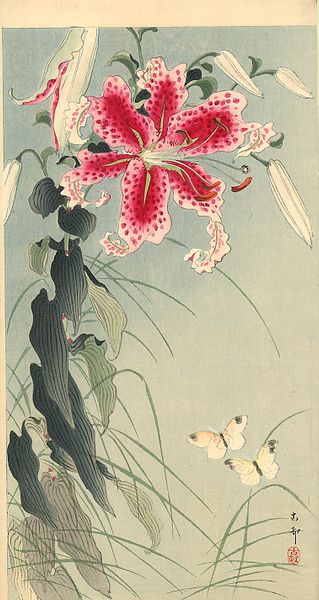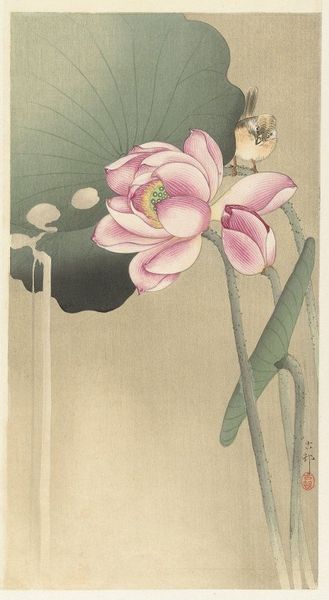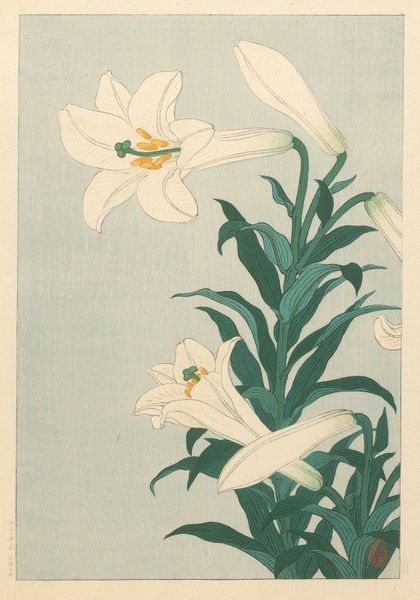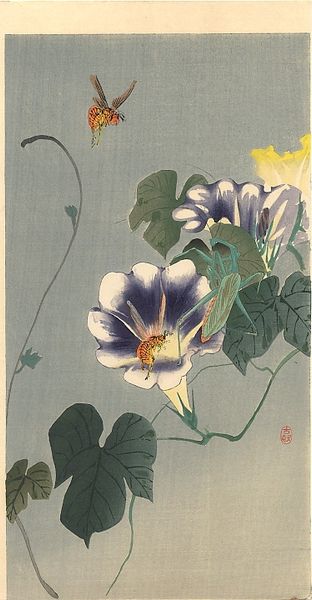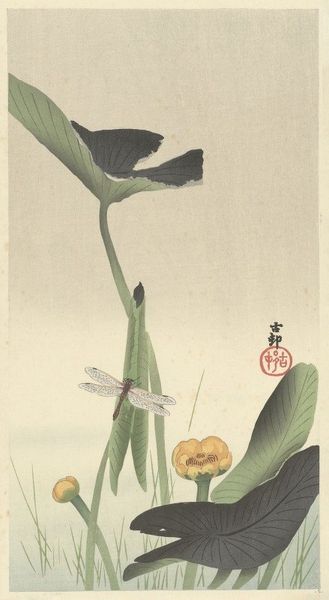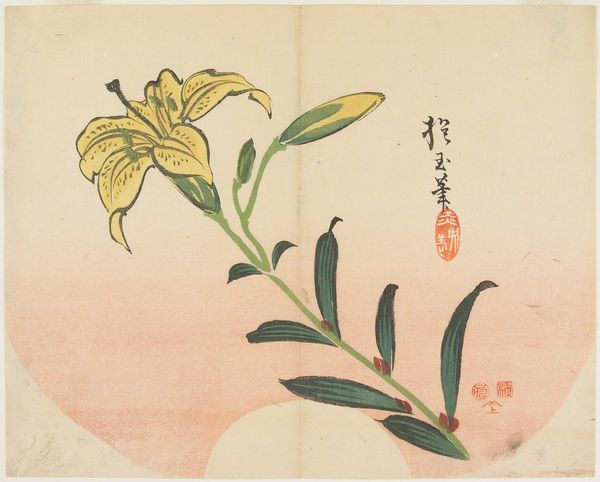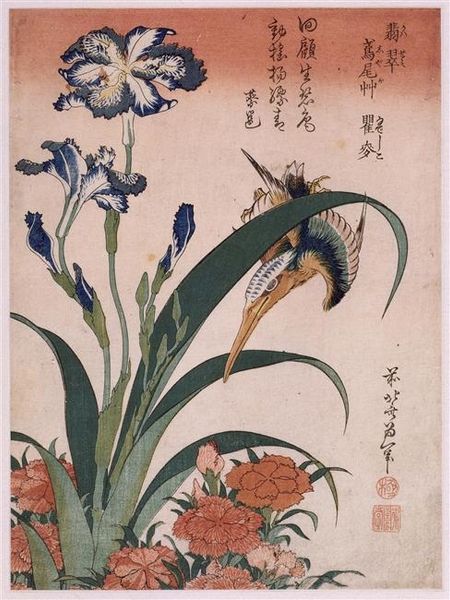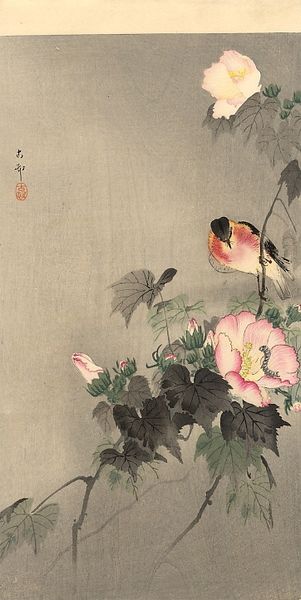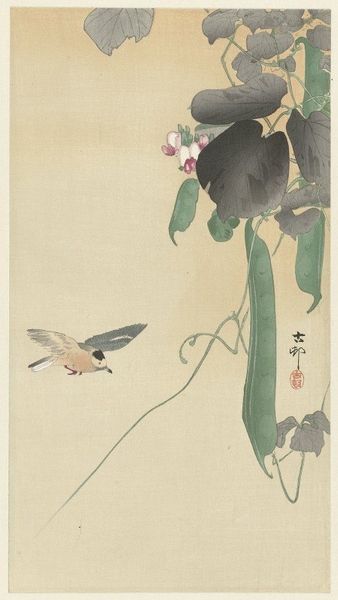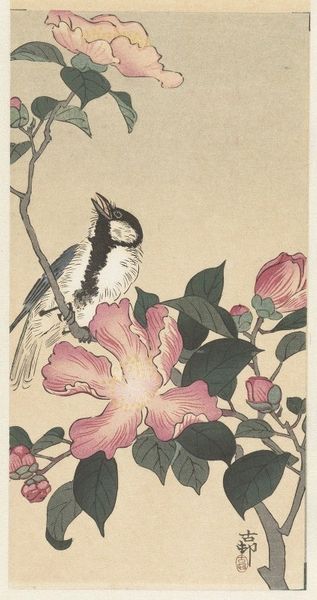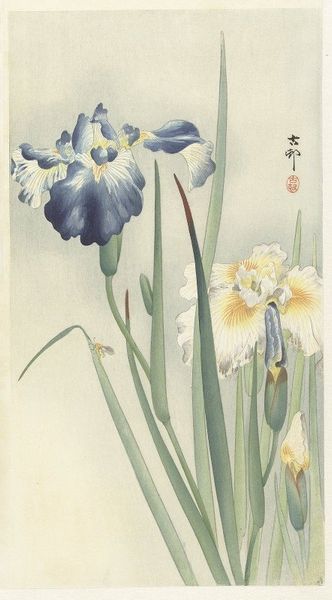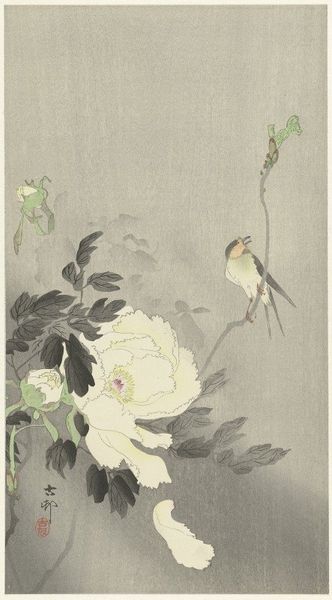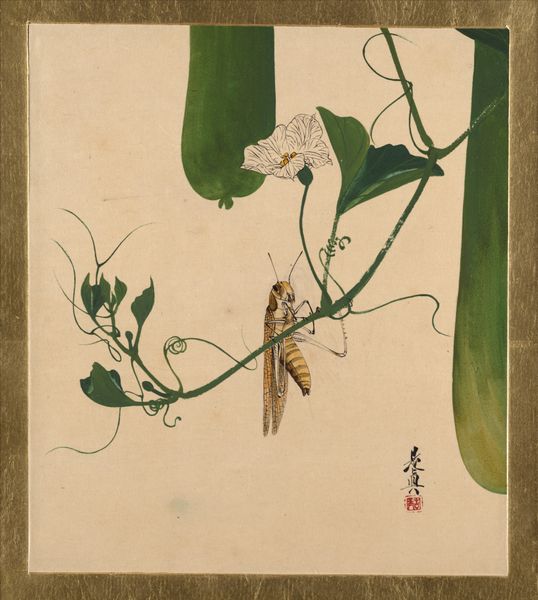
print, woodblock-print
#
water colours
# print
#
flower
#
ukiyo-e
#
woodblock-print
#
plant
Copyright: Public domain
Ohara Koson created this woodblock print of a butterfly and lily, part of the Shin-Hanga, or New Print Movement, which revitalized traditional ukiyo-e art during the early 20th century. Koson’s work straddles the line between the natural world and human artifice. Born in Kanazawa, Japan, Koson witnessed Japan's shift from a feudal society to a modern, industrialized nation. His art reflects this tension, capturing the delicate balance between nature's beauty and humanity's impact. Consider the symbolism here. The butterfly, often seen as a symbol of transformation and freedom, is juxtaposed with the lily, which represents purity and rebirth. The Shin-Hanga movement was in part informed by international markets. It captured the Japanese aesthetic for Western audiences, whose perceptions of Japan were often through an Orientalist lens. Koson's work navigates these complex cultural exchanges, appealing to both Japanese and Western sensibilities. Koson's “Butterfly and Lily” is more than just a pretty picture. It's a reminder of the interconnectedness of nature, culture, and identity, inviting us to reflect on our place in the world.
Comments
No comments
Be the first to comment and join the conversation on the ultimate creative platform.
